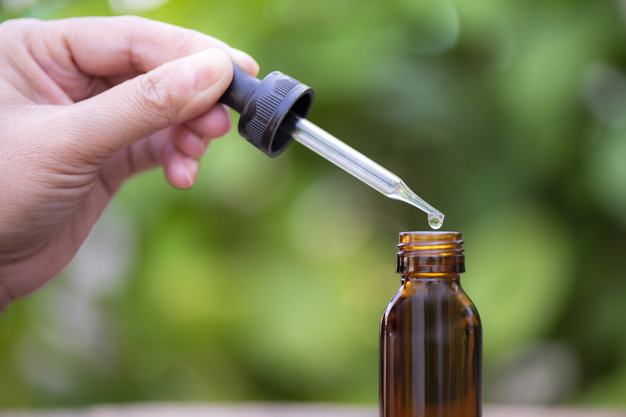Colloidal silver is an alternative therapy. It is an effective treatment for all types of infections and diseases ranging from the common cold to various types of cancer. The use of colloidal silver is controversial because it causes various side effects. The following article gives an overview of the uses and side effects of colloidal silver.
In this article:
What is Colloidal Silver?
How does it Work?
Health Benefits of Colloidal Silver
Side Effects of Colloidal Silver
Is it Worth Trying it?
What is Colloidal Silver?
Suspension of silver particles in a liquid is called colloidal silver. The particles cannot be removed by filtering because of their small size. The size of the silver particles in suspension can vary, some of them are so tiny that they are known as “nanoparticles”. By nanoparticles, it means that they are less than 100nm in size and are not visible to naked eyes.
In ancient times there was a great popularity of using colloidal silver to treat bacterial, viral and fungal infections. But nowadays the development of modern antibiotics has replaced its use. Some people also use it to treat illnesses such as Lyme disease, tuberculosis and HIV/AIDS.
Colloidal silver can be taken as a dietary supplement or can be applied directly to the skin. Depending on the amount of silver in suspension the solution of colloidal silver can be found in various strengths.
How does it Work?
When taken orally and applied on a wound colloidal silver works by its antibacterial and antiseptic effects. The exact functioning of colloidal silver is unknown. Some research suggests that it damages the cell membrane of bacteria by attaching with the proteins present in cell membranes.
Due to damage in the cell membrane, the silver ions from the solution passes into the cells and interferes with the metabolic processes of bacteria and damage its DNA, which eventually leads to cell death.
The antibacterial and antiseptic effects of colloidal silver depend on the size and shape of silver particles, as well as their concentration in a solution. A solution that contains a large number of silver nanoparticles is more beneficial because it releases more silver ions due to the greater surface area.
The medicinal property of colloidal silver is due to silver ions so they are considered to be “biologically active”. The ions are released when they come in contact with moisture such as body fluids.
For the treatment of yeast infection, it can be used internally and externally. Topically it is safely applied two to three times a day without any adverse effects. Orally the dosage in initial days should be small, about 1 tablespoon per day.
A patient may feel initially worse when treated internally because of the release of toxic waste by dying fungus. This is known as Candida die off. Due to this reason, it is suggested that internal infection should be treated gradually.
Health Benefits of Colloidal Silver
It is known that colloidal silver is not used for the treatment of fungal infection but is also used for bacterial and viral infections.
Antifungal
According to some studies, colloidal silver inhibits the growth of some strains of fungi. It can be taken orally or can be applied topically. Douches of colloidal silver can be effective to treat yeast infections in the vagina and cervix. But at present, there is little evidence which shows that colloidal silver is a reliable antifungal agent.
Antiviral
Different types of silver nanoparticles help to kill viral compounds as suggested by some studies. It can be effective against the common cold, flu virus, etc. The concentration of the nanoparticles can vary, and according to a recent study colloidal silver is found to be ineffective at killing viruses.
Antibacterial
Colloidal silver was one of the most popular antibacterial treatment before the discovery of antibiotics. It can kill a wide range of bacteria and because of this property used in some healthcare products like wound dressing and medical equipment. Immediate relief can be provided by mixing colloidal silver with water in case of bacterial vaginosis and cervicitis.
Side Effects of Colloidal Silver
Normally an individual is exposed to small amounts of silver every day which is present in the air, drinking water and food. This small amount is thought to be safe.
Ingestion of colloidal silver is thought to be unsafe because it can cause many risks. And among all those risks the biggest risk which is associated with chronic exposure pf colloidal silver is argyria.
Argyria is a condition that develops due to the deposition of silver particles in the body and skin which leads to the blue-grey coloration of the skin. These particles can also deposit in intestines, kidneys and other organs.
The risk of developing argyria increases if silver is taken through food supplements or an individual works in a job that exposes him or her to a large amount of silver. It is thought that argyria develops when an individual ingests silver compounds over a long period. Colloidal silver also stimulates the production of melanin in skin and areas exposed to the sun to become increasingly discolored.
The risk of ingested nanoparticles is not known but is it said that these particles easily pass into the cells and cross the blood-brain barrier which may lead to probable health risks. The topical application of colloidal silver is thought to be safe as compared to ingested but if used frequently it may develop argyria or silver allergy.
Is it Worth Trying it?
The composition of colloidal silver products varies widely, so their effects also vary. Additionally, there is no known benefit of silver when it is taken orally. So knowing all the risks and unproven benefits, using colloidal silver is not a good idea.
Conclusion
Colloidal silver is a solution that consists of tiny silver particles. There are many benefits like it boosts the immune system, treats fungal, bacterial and viral infections, prevents various types of cancer, and cleans the gut. But there is very little evidence that supports its health benefits. Ingestion of large doses may cause various risks. So, a person should avoid it and should take other medications.
References:
https://www.ncbi.nlm.nih.gov/pmc/articles/PMC4188582/
https://www.sciencedaily.com/releases/2012/03/120308062553.htm













